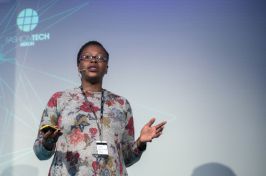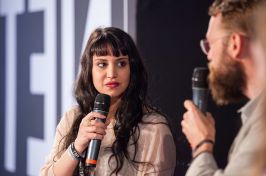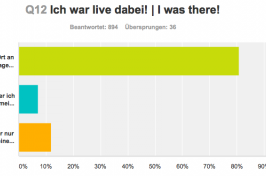Professor Bernhard Pörksen outlines six characteristics to explain what constitutes viral storytelling at the MEDIA CONVENTION Berlin.
1. Archetypes: The 106 year old in the White House
In February of this year, a 106 year old woman visited US President Barack Obama in the White House. It was a successful PR action for Obama, and for the centenarian Virginia McLaurin, it was the fulfilment of a dream. "A black President, yay, and his black wife!" the 106 year old exclaimed and lay down a little dance with Michelle Obama. Then she said: "I'm here to celebrate black history."
This was a prime example of an archetypical story for Bernhard Pörksen – and, at the same time, it represents the first ingredient for online storytelling. This is because the video is not just about one woman, but tells a bigger story. When McLaurin dances in the White House, it gives the feeling, even if just for a second, that the centuries' long struggle against racism and social repression has been won.
2. Symbolism: The blue marble in space
Before NASA had released the first pictures of Earth from space in the late Sixties, the environmental activist Stewart Brand sold pins reading "Why haven’t we seen a photograph of the Whole Earth yet?" The picture of the Earth as a blue marble then became the symbol of the environmental movement.
For Bernhard Pörksen, this case exemplifies how a strong symbol is sometimes enough to carry a good story. An example of a viral symbol from the social media age is the grey-black slogan "Je suis Charlie".
3. Empty Spaces: Baby shoes for sale
Legendary American writer Ernest Hemingway is said to have written the shortest story in history. Hemingway wanted to prove that a touching story didn't need more than six words. The question of if he actually wrote the story is controversial. That didn't stop it from being repeated. The story goes as follows: "For sale: Baby Shoes. Never worn".
"Good stories leave room for the imagination" Bernhard Pörksen explained. That is what makes the baby shoe story so exemplary for that effect. The story leaves the reader plenty of space for the imagination: Did the child die, or was it never even born? Who was the mother? These types of empty spaces are the third characteristic for viral storytelling, according to Pörksen.
4. Dominance: Is the dress blue or white?
At the beginning of 2015, millions of people shared the picture of a striped dress. Some people saw the dress being blue and black, while others clearly saw the dress as white and gold. Soon, the web was full of dozens of scientific and pseudo-scientific explanations for the phenomenon.
The dominance of a few select stories is a further characteristic of viral storytelling. News portals and websites like Buzzfeed are constantly watching each other - and the successful stories of the others are shared immediately.
5. Commercialisation: You won't believe what happened next
A typical headline for the clickbait website heftig.co reads: "This lady connects her phone to a flower pot. What happens 10 hours later is a stroke of genius." The cliffhanger promises a sensation, the stories almost never deliver on their promise.
"Clickbaiting sites aggressively try to make a riddle of their stories" Bernhard Pörksen explains. "Not to inspire their readers, mind you, but to push their own reach." Unfortunately, this is typical for viral storytelling on the web. The stories lose their originality to be able to grab attention and make money.
6. Hysteria: The girl who was never raped
At the beginning of 2016, Russian state television reported on a story about a 13 year old girl who had allegedly been raped by immigrants. The story was spread in the social networks, with all kinds of details added – and provided grounds for hatred and insults against foreigners. Days later, it turned out that the reported assault had never actually taken place.
"Storytelling on the web faces the problem of a triggered cycle of hysteria" Bernhard Pörksen explained. In the digital age, users share the stories in their social groups and bubbles at lightning speed – and re-interpret them to fit their own purposes and views. Nevertheless, despite the hysteria and commercialisation, Pörksen does not see himself as a pessimist. "There are also plenty of wonderful stories on the web", the Professor emphasized. He called on everyone to write, share and comment stories more carefully and thoughtfully on the web.
Image: MEDIA CONVENTION Berlin/Uwe Völkner





